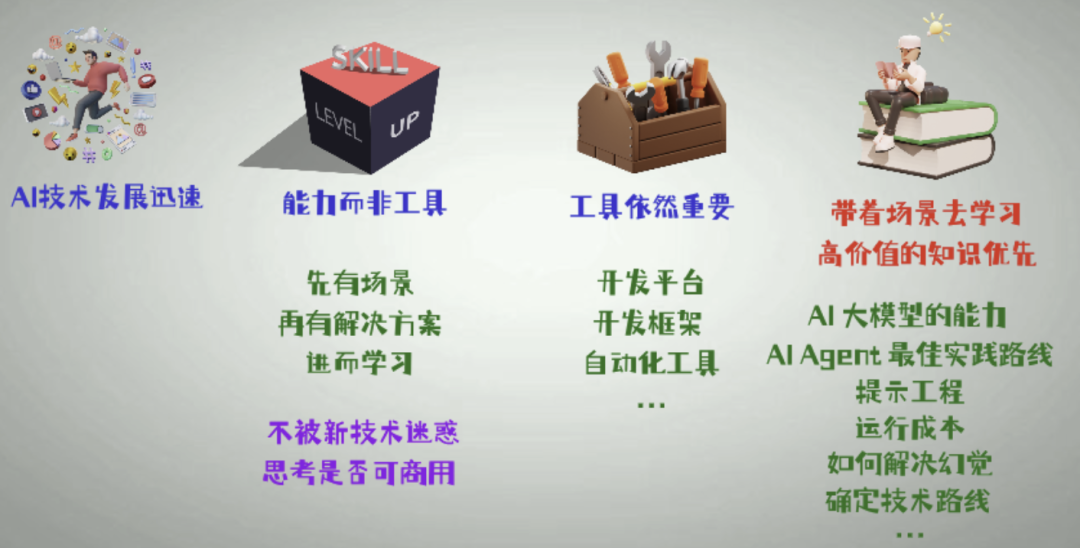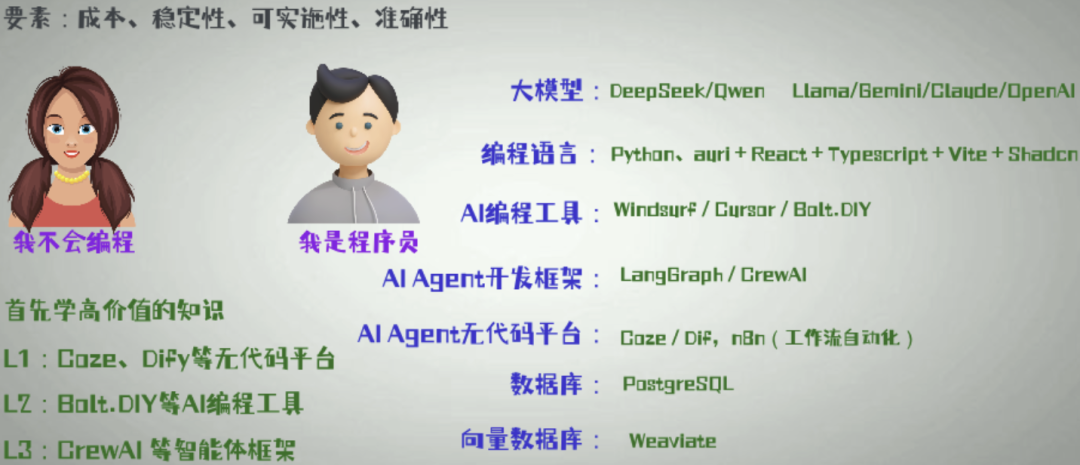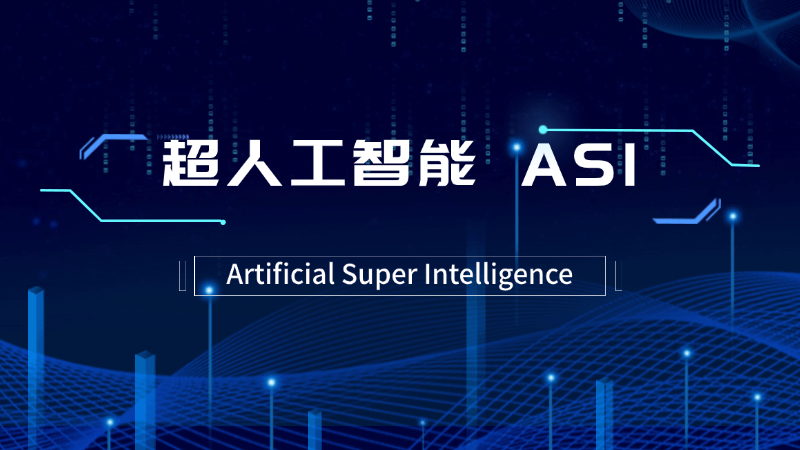In-depth guide to AI Agent platform and technology selection
Driven by the wave of Artificial Intelligence technology, AI Agent (intelligent body) technology is developing at an unprecedented speed and gradually penetrating into various industries. Faced with the endless AI Agent platforms and technology frameworks on the market, both technology experts and industry novices may face a selection dilemma:
- How do I choose the AI Agent platform that best suits my needs?
- What are the dominant technology frameworks and what are their respective strengths and weaknesses?
- How should my specific application scenario be effectively integrated with AI Agent technology?
- With such a wide range of platforms and frameworks, where should you start learning and how should you make your technology selection?
This article aims to provide a more in-depth and comprehensive AI Agent platform and technology selection guide, not only to answer the above basic questions, but also to analyze the characteristics of various platforms and frameworks, and combined with the actual application scenarios, to help readers make more informed technical decisions.
Strengthening AI Foundational Capabilities: The Cornerstone of Selection
Insight into the evolution of AI technology
The field of AI has experienced explosive growth in recent years. From basic machine learning algorithms to today's hot generative AI and embodied intelligence, the technology is evolving rapidly. Major tech giants have invested heavily in the development of AI models, the open source community has contributed a large number of excellent AI projects and tools, and AI platforms and development frameworks have sprung up. The rapid iteration of technology brings us unprecedented opportunities, as well as learning and selection challenges.
For example, in the past few months alone, we have witnessed Google Gemini, ChatGLM, and Baidu Wenshin Yiyi, search in depth iFLYTEK Spark and many other vendors have released a new generation of AI models with stronger performance and richer features. These technological advances are exciting, but they also dazzle technical learners and application developers, making it difficult to choose.
In the face of such rapid technological change, we urgently need to clarify our learning priorities and selection strategies:
- How can you keep from being overwhelmed by the wave of new technology and always keep your learning effective and directed?
- Of the many branches of AI technology, which are the core capabilities for building an AI Agent?
- With a wide range of platforms and frameworks available, how do you make the best choice for your needs?
Competency-Based, Tool-Based: Core Principles for Learning and Selection
During the learning and technology selection process for the AI Agent, the "Competence-based, tools-based" It should be the core guiding principle.

This means that we should focus our learning on the Understanding the core capabilities of AI On the other hand, it is necessary to deeply explore the functional boundaries that can be realized by the current AI big model and the potential of AI technology in solving practical problems and empowering application scenarios. Specifically, we need to focus on the following aspects:
- Large model capability spectrum: To understand the technical characteristics, strengths and limitations of different types of large models (e.g., Transformer models, diffusion models, graph neural networks, etc.), and to understand the differences in their capabilities in natural language processing, computer vision, and multimodal understanding.
- AI Agent Core Mechanism: In-depth understanding of the components of an AI Agent, e.g., perception module, decision-making module, execution module, memory module, etc., and how the Agent works, learns, and interacts with each other.
- Application Scenario Innovation: Actively explore the application scenarios of AI Agent in different industries and fields, and gain insights into the potential application value and business opportunities, such as intelligent customer service, virtual assistant, content creation, smart home, industrial automation, and education counseling.
Learn and select specific tools, platforms and frameworks based on a thorough understanding of AI capabilities. The correct learning and selection path should follow the following steps:
- Define application scenarios and problemsAI Agents: Analyze their own demand scenarios in depth and define the specific problems they want to solve through AI Agents, such as improving customer service efficiency, optimizing the content creation process, automating business processes, and so on.
- Evaluating AI capability matches: Based on the requirements of the scenario, evaluate how well different AI capabilities (e.g., natural language understanding, dialog generation, knowledge graph, reasoning, planning, etc.) match the scenario and determine the required core AI capabilities.
- Choosing the right tools and platformsOn the basis of defining the required AI capabilities, research and evaluate various AI agent platforms, development frameworks and related tools in the market, and select a solution that can effectively support the needs of the scenarios, meet the requirements of technical capabilities, and take into account cost-effectiveness.
For example, when we look at the release of Smart Spectrum AI's technology for AI intelligences that can autonomously manipulate computers, the first thing we should think about is this: What are the core AI capabilities of this technology? What scenarios can it solve? Instead, they are immediately engaged in using and learning the tool. A deeper analysis reveals that the key to this technique is to Enhanced execution capabilities and autonomy of the AI Agent The technology has been developed to simulate the behavior of a human user on a computer, allowing for more complex automation tasks. However, this technology also faces Higher costs, lack of versatility, security risks The challenges include. Therefore, in evaluating the adoption of this technology, there is a need for Combining specific application scenarios and practical needs Make comprehensive considerations.
On the other hand, if we start chasing after specific tools and platforms, it is easy to fall into the misunderstanding of "learning tools for the sake of learning tools", ignoring the understanding of AI's core capabilities and in-depth thinking of application scenarios.
The Importance of Tools: Enhancing Efficiency and Accelerating Results
While the core principle is "competence-based, tools-based", this does not mean that tools are unimportant. The right tools can greatly improve the development efficiency of AI Agent, lower the technical threshold and accelerate the application landing. For example, various AI Agent platforms provide graphical interfaces, pre-built components, and convenient API interfaces, enabling developers to quickly build and deploy AI Agent applications without having to build all modules from scratch. Various development frameworks provide structured code organization, rich tool libraries, and comprehensive documentation, enabling developers to perform customized development and functionality expansion more efficiently. Automation tools help developers simplify repetitive tasks, such as data preprocessing, model training, performance evaluation, deployment, etc., so that they can focus more on core business logic and innovative feature development.
Therefore, on the basis of learning and mastering the core capabilities of AI, choosing the right tools and platforms can achieve twice the result with half the effort.
Scenario-Driven Learning: Practice Makes Perfect
Learning AI Agent technology. The most effective way is "scenario-driven learning" That means that we should. This means that we should Starting from specific application scenarios, learning and practicing with real problems. For example, if we want to build an intelligent customer service agent, then we can learn around the following problem. For example, if we want to build an intelligent customer service agent, the learning can be organized around the following questions:
- What are the core capabilities required for an Intelligent Customer Service Agent? (e.g., natural language understanding, intent recognition, knowledge base retrieval, dialog management, emotion recognition, etc.)
- What platforms and frameworks are available for building Intelligent Customer Service Agents? (e.g., Rasa, Dialogflow, Amazon Lex, Coze, Dify, etc.)
- How to design the dialog flow and knowledge base of an Intelligent Customer Service Agent?
- How to evaluate the performance and user experience of Intelligent Customer Service Agent?
- How to continuously optimize and iterate on Intelligent Customer Service Agent?
Through scenario-driven learning, we can test the actual effect of AI technology in practice, evaluate the applicability of tools and platforms, and continue to accumulate experience and improve skills. In practice, we need to focus on the following key indicators:
- Efficiency gains: Is the AI Agent effective in increasing productivity and reducing labor costs?
- running cost: Is the cost of deploying and running the AI Agent manageable and within budget?
- running speed: Does the AI Agent's responsiveness and processing speed meet user needs?
- Quality of results: Is the output of the AI Agent accurate, reliable, and as expected?
- user experience: Is the user's experience interacting with the AI Agent smooth, natural, and friendly?
By continuously monitoring and evaluating these metrics, we can continuously optimize the performance of the AI Agent and ultimately determine whether the chosen technology solution truly meets the requirements of the scenario.
AI Full Stack Technology Stack Selection Details
After clarifying the core principles of AI learning and selection, we will discuss the selection details of AI full-stack technology stack to help readers build better and more powerful AI Agent applications.
Dimensions of Technology Selection Considerations
When selecting an AI Agent technology, in addition to the previously mentioned Cost, stability, implementability, accuracy In addition to the four key factors, the following dimensions need to be taken into account:
- functional completeness: Whether the platform or framework provides the full feature set needed to build an AI Agent, e.g., natural language processing, dialog management, knowledge base, multimodal support, agent orchestration, etc.
- Ease of use and development efficiency: Whether the platform or framework is easy to learn and use, provides user-friendly development interfaces and tools, and improves development efficiency and shortens development cycles.
- Scalability and Flexibility: Whether the platform or framework supports flexible functionality expansion and customized development, and whether it can meet the needs of future business growth and technology upgrades.
- Community support and ecosystems: Whether the platform or framework has an active community and a well-developed ecosystem, and whether it has access to timely technical support and abundant resources.
- Security and Privacy: Whether the platform or framework provides comprehensive security mechanisms and privacy protection measures to safeguard user data and system security.
- Deployment methods and operating environments: What deployment methods are supported by the platform or framework (e.g., cloud, local, hybrid) and whether they are adaptable to different operating environments and hardware conditions.
- License Agreements and Business Models: What is the license agreement for the platform or framework, is it open source and free of charge, are there commercial restrictions, are commercial support services available, and is the business model sustainable.
In the actual selection process, you need to prioritize and focus on your own scenarios, weigh these dimensions and choose the solution that best meets your needs.
Selection recommendations for different technical backgrounds
Zero code base: quick start, low threshold practice
with regards to No programming background the users of the Low-/zero-code AI Agent platform It is the best choice for a quick start and practice. Such platforms typically offer Graphical user interface, drag-and-drop components, pre-configured function modules The AI Agent platforms are designed to allow users to quickly build and deploy AI Agent applications without having to write code. At the same time, these platforms also tend to Rich built-in AI capabilities For example, natural language understanding, dialog generation, knowledge base management, multi-channel integration, etc. Users can directly invoke these capabilities without having to develop and integrate complex AI models on their own.

Recommended Platform:
- Coze. Launched by ByteHopper Cloud AI Agent Build Platform Provided Visual editing interface, rich plug-in ecosystem, powerful workflow orchestration capabilities Users can easily create various types of AI Agents, such as chatbots, content creation assistants, knowledge quiz bots, and more. Coze The advantages of Extremely easy to use, feature-rich, fast iteration of updates But the downside is Completely relies on cloud services, does not support local deployment, data security and privacy may have some concerns The
- Dify. Open Source AI Agent Platform (math.) genus Supports both cloud and local deployments Provided Coze-like visual editing interface and plug-in mechanism But Increased focus on flexibility and customizability The Dify The advantages of Open source free, locally deployed, scalable The user can develop and extend the functions according to their own needs, and better control the data security and privacy.
- FlowiseAI. Another great open source AI workflow platform (math.) genus Specializing in building AI Agents and automated processes Provided Node-based visual programming interface The AI workflow can be built quickly by dragging, dropping, and connecting nodes to complex AI workflows. FlowiseAI The advantages of Powerful workflow orchestration capabilities, rich node library, flexible integration capabilities It can be seamlessly integrated with other AI models, databases, API interfaces, and more.
- Botpress. A Platform Focused on Conversational AI Agent Building Provided Powerful natural language processing engine, flexible dialog management system, rich channel integration capabilities Botpress is suitable for building all types of chatbots and virtual assistants. The advantages of Botpress are Professional Conversational AI Capabilities, Mature Product System, Perfect Commercial Support But relatively speaking. Steeper learning curve, higher threshold for customized development The
Learning Pathway Suggestions:
- Choose a zero-code platform with high ease of use (e.g., Coze or Dify) Get started with a hands-on, rapid-fire experience of building and applying an AI Agent.
- Visual editing tools and preset components provided by the Learning Platform You will also learn basic Agent creation and configuration methods.
- Experiment with the platform's built-in AI capabilities (e.g., natural language understanding, dialog generation, knowledge bases, etc.), and building simple AI Agent applications, e.g., simple question-and-answer bots or chatbots.
- Step-by-step exploration of the platform's advanced features (e.g., plug-in mechanisms, workflow orchestration, multi-channel integration, etc.) to build more complex AI Agent applications, such as intelligent customer service bots, content creation assistants, etc.
- Gradually experiment with more flexible and customizable platforms based on your needs. (e.g., Dify or FlowiseAI) to learn the underlying principles and technical details of AI agents.
Programming Fundamentals: Deep Customization, Flexible Extension
with regards to Basic programming skills the developers of the AI Agent Development Framework cap (a poem) Lower level tool libraries able to provide Greater flexibility and customizability In addition, AI Agent can be used to meet the needs of more complex and personalized applications. Developers can use programming languages (e.g., Python, JavaScript, etc.), combined with a variety of AI libraries and tools, to build the modules of the AI Agent from scratch, and carry out deep customization and optimization.
Recommended frameworks and tools:
- LangChain. One of the most popular AI Agent development frameworks Provided Rich set of components and modules For example, model I/O, cue word management, memory modules, Agent types, tool libraries, chains components, etc.. Supports a wide range of mainstream large language models (e.g., OpenAI, Anthropic Claude, Google PaLM, Hugging Face, etc.). Available in Python and JavaScript LangChain's strengths are The advantages of LangChain are Powerful, ecologically sound, active community The AI Agent is the framework of choice for building complex AI Agent applications.
- CrewAI. A development framework specializing in multi-agent collaboration (math.) genus Built on LangChain Provided A higher level of abstraction and encapsulation This makes it easier for developers to Building and Managing Multi-Agent Teams Simulate teamwork scenarios for more complex task breakdowns and collaborative completions. CrewAI The advantages of Simplifies the complexity of multi-agent development, improves development efficiency, and makes it easy to build complex, collaborative AI systems. The
- Transformers (Hugging Face). One of the most popular deep learning model libraries (math.) genus Provides tens of thousands of pre-trained models , covering a wide range of areas such as natural language processing, computer vision, audio processing, and more. Support for various mainstream deep learning frameworks (e.g., PyTorch, TensorFlow, JAX, etc.). The Transformers library is Fundamental tools for building a variety of AI applications This includes AI Agents. The advantages are Rich models, powerful performance, large community , is a must-have tool library for deep learning developers.
- Rasa. Open Source Framework Focused on Conversational AI Development (math.) genus Provides a complete dialog system building tool The NLG is a new, innovative, and flexible program that includes modules such as Natural Language Understanding, Dialogue Management, NLG, and more. Support for Python and multiple dialog channels . The advantages of Rasa are Powerful conversation management capabilities, flexible customization options, focus on user privacy and data security , for building enterprise-grade chatbots and virtual assistants.
- AutoGen (Microsoft). Multi-Agent Collaboration Framework from Microsoft (math.) genus Focused on building customizable, conversational multi-agent systems (math.) genus Supports multiple Agent types (e.g., AssistantAgent, UserProxyAgent, GroupChatAgent, etc.). Provides flexible Agent interaction and collaboration models The AutoGen The advantages of Powerful multi-agent collaboration, flexible agent configuration and interaction, and easy to build complex conversational AI systems. The
Tech Stack Suggestion:
- programming language:: Python The language of choice for AI development, with a rich ecosystem of AI libraries and tools. JavaScript It is widely used in front-end development and Node.js back-end development, and frameworks such as LangChain also provide JavaScript versions.
- AI Agent Framework:: LangChain is the preferred general-purpose AI Agent development framework. CrewAI for multi-agent collaboration scenarios. Rasa for conversational AI applications. AutoGen is another option for multi-agent collaboration.
- Deep Learning Library:: Transformers (Hugging Face) are essential deep learning modeling libraries that PyTorch cap (a poem) TensorFlow is the dominant deep learning framework.
- vector database:: Weaviate maybe Pinecone The isovector database is used to store and retrieve vector data to improve semantic search and similarity matching performance for AI applications.
- aid:: Bolt.DIY / Bolt.New and other AI-assisted programming tools can improve development efficiency. Windsurf / Cursor VSCode plug-ins such as this one provide a more convenient AI programming experience.
Learning Pathway Suggestions:
- Systematic learning of the Python programming language , Mastery of basic syntax, data structures, common libraries and tools.
- Learn the basics of deep learning , understanding of neural networks, backpropagation, common model structures, etc.
- Learn more about the LangChain framework The core components and modules, such as model I/O, cue management, memory modules, chains, etc., can be used in a variety of ways.
- Try building a simple AI Agent application with LangChain! , e.g., question and answer bots, text summarization tools, code generation assistants, etc.
- Explore LangChain's advanced features step-by-step For example, Agent tool integration, multi-Agent collaboration, custom chains components, etc., to build more complex AI Agent applications.
- Choose the right AI Agent framework and tool library for your application. For example, if you need to build multi-agent systems, you can learn CrewAI or AutoGen; if you need to build conversational AI applications, you can learn Rasa or Botpress.
- Stay up-to-date on the latest technology developments in AI We will continue to improve our skills and applications by learning and mastering new AI models, frameworks, and tools.
Summary and outlook
This article discusses the various aspects of AI Agent platform and technology selection, from AI basic capabilities, selection considerations, selection recommendations for different technical backgrounds, to specific platforms, frameworks, and tool recommendations, in an effort to provide readers with a comprehensive and practical guide to AI Agent technology selection. We hope that the explanations in this article can help readers Better understand the AI Agent technology, clarify their own needs, choose the most suitable technical solutions, and quickly get started with AI Agent development to build efficient, intelligent and reliable AI applications. The
In the future, AI Agent technology will continue to move toward Smarter, more autonomous, more versatile We look forward to seeing more innovative AI Agent applications emerge, bringing profound change and value enhancement to various industries. We expect to see more innovative AI Agent applications emerge, bringing profound changes and value enhancement to various industries. As participants and builders of the AI era, we should Maintain a passion for continuous learning, actively embrace new technologies, and constantly explore the infinite possibilities of AI. The
© Copyright notes
Article copyright AI Sharing Circle All, please do not reproduce without permission.
Related articles

No comments...




